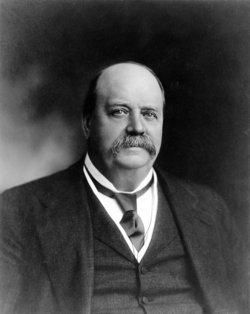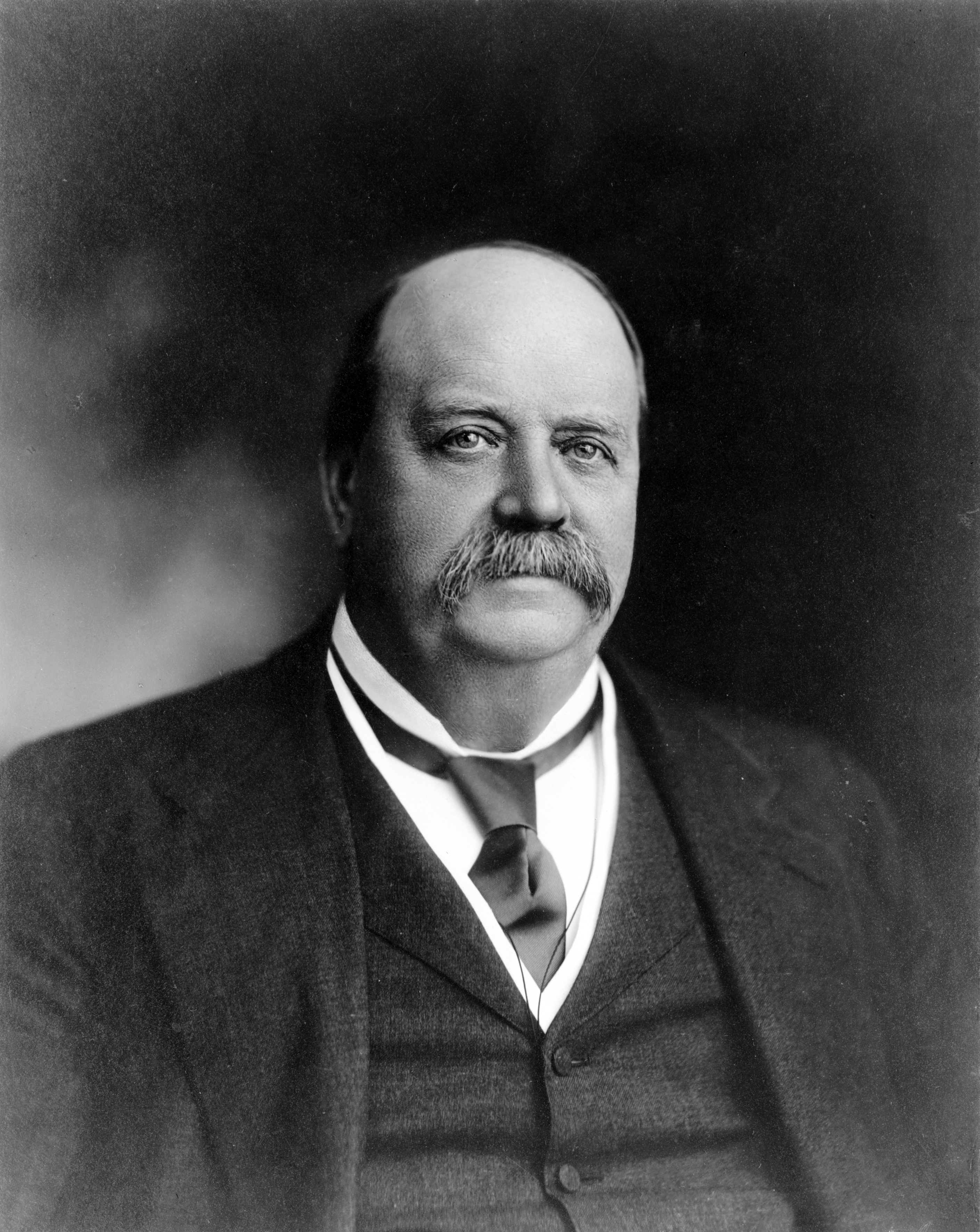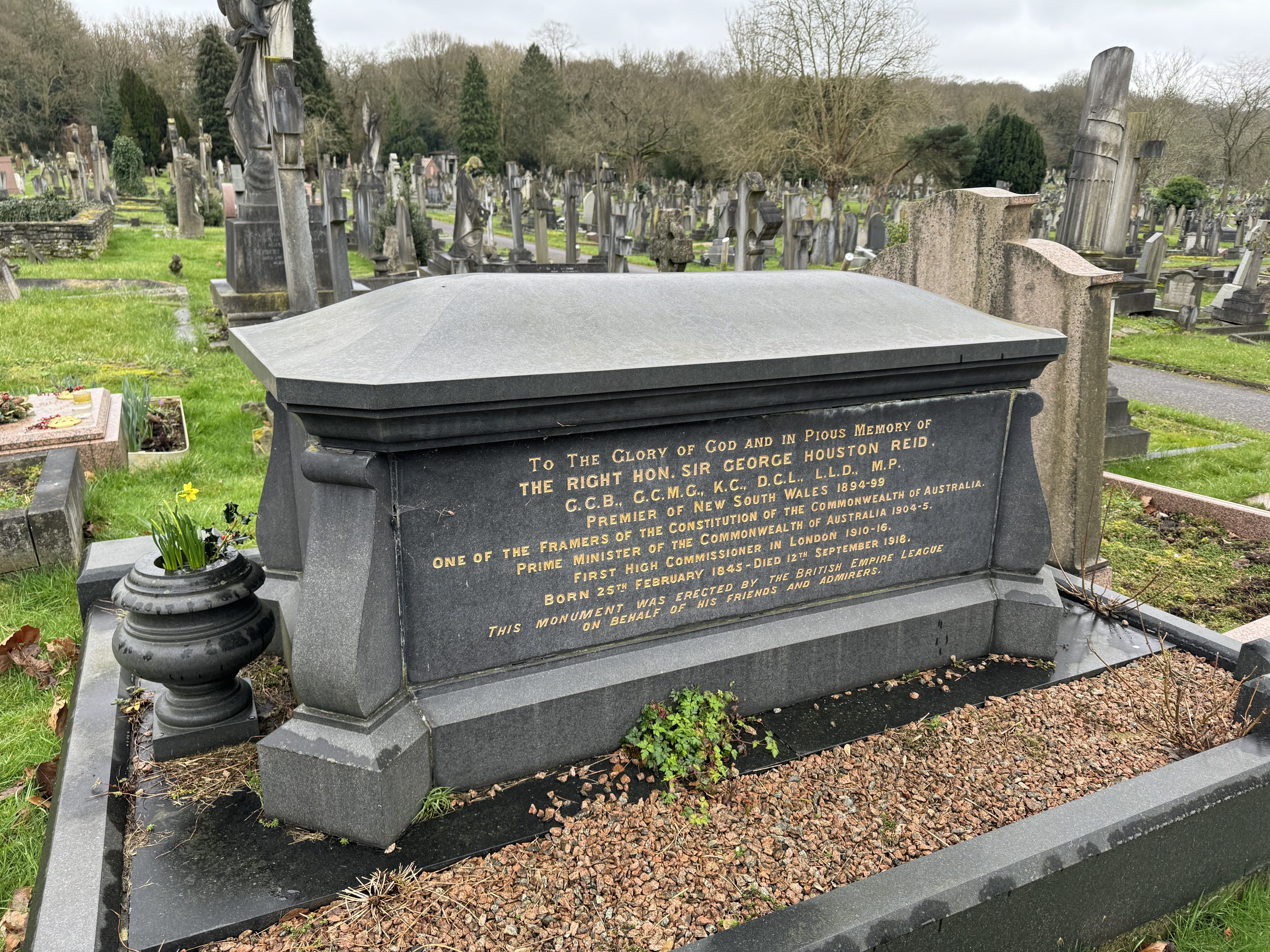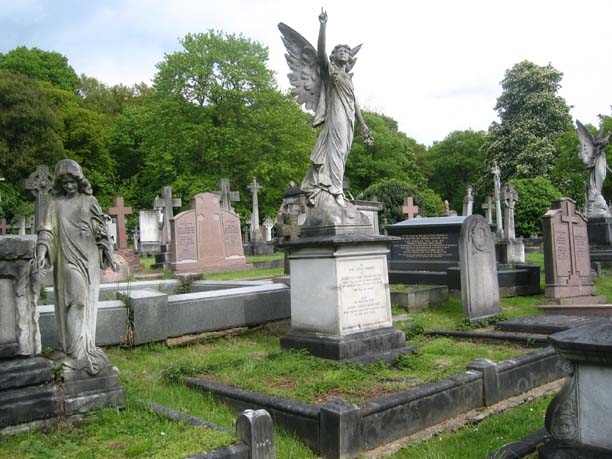Reid was Federal Opposition Leader from the commencement of the Federal Parliament until 17 August 1904, Prime Minister 18 August 1904 until 5 July 1905, and then Opposition Leader again from 7 July 1905 until 16 November 1908.
Reid was Member for East Sydney from the commencement of the first Federal Parliament in May 1901 until his resignation on 13 April 1910, to become the first Australian High Commissioner to the United Kingdom.
Born in Scotland, his family was one of many Presbyterian families brought out to Australia by Reverend Dr John Dunmore Lang. His father was a Presbyterian Minister, and his mother was the daughter of a Presbyterian Minister, and George was the youngest of their five sons. The family arrived in Melbourne in May 1852, and George attended the Melbourne Academy, later Scotch College.
George worked at the Colonial Treasury in New South Wales, becoming an assistant accountant in the treasury by 1864. He became the head of the Attorney General's Department by 1878, and wrote his celebrated "Five Essays on Free Trade" in 1875. He studied law in 1876, and the law provided him with the independent income necessary to contemplate a parliamentary career, an unpaid job at the time. His political career was assisted by a quick wit and exceptionally entertaining oratory.
Reid was elected to the New South Wales Legislative Assembly in 1880 as Member for East Sydney. in 1883, as Minister for Public Instruction, he introduced technical education and he remained passionate about education throughout his life.
He had become Sydney's leading barrister and became a QC in 1898. He had become Leader of the Opposition in New South Wales in 1891.
At age 46 at Wangaratta, Victoria, he married Florence Ann Brumby, then 23, from Tasmania.
After his term as High Commissioner expired in 1916,he was elected to the House of Commons for the seat of St George, Hanover Square as an independent and remained a member of the House of Commons until his death on 12 September 1918.
In 1897, Reid was made an Honorary Doctor of Laws by Oxford University. He was appointed to the Privy Council in 1904, became a Knight Grand Cross of the Order of St Michael and St George in 1911, and a Knight Grand Cross of the Order of the Bath in 1916.
Reid was Federal Opposition Leader from the commencement of the Federal Parliament until 17 August 1904, Prime Minister 18 August 1904 until 5 July 1905, and then Opposition Leader again from 7 July 1905 until 16 November 1908.
Reid was Member for East Sydney from the commencement of the first Federal Parliament in May 1901 until his resignation on 13 April 1910, to become the first Australian High Commissioner to the United Kingdom.
Born in Scotland, his family was one of many Presbyterian families brought out to Australia by Reverend Dr John Dunmore Lang. His father was a Presbyterian Minister, and his mother was the daughter of a Presbyterian Minister, and George was the youngest of their five sons. The family arrived in Melbourne in May 1852, and George attended the Melbourne Academy, later Scotch College.
George worked at the Colonial Treasury in New South Wales, becoming an assistant accountant in the treasury by 1864. He became the head of the Attorney General's Department by 1878, and wrote his celebrated "Five Essays on Free Trade" in 1875. He studied law in 1876, and the law provided him with the independent income necessary to contemplate a parliamentary career, an unpaid job at the time. His political career was assisted by a quick wit and exceptionally entertaining oratory.
Reid was elected to the New South Wales Legislative Assembly in 1880 as Member for East Sydney. in 1883, as Minister for Public Instruction, he introduced technical education and he remained passionate about education throughout his life.
He had become Sydney's leading barrister and became a QC in 1898. He had become Leader of the Opposition in New South Wales in 1891.
At age 46 at Wangaratta, Victoria, he married Florence Ann Brumby, then 23, from Tasmania.
After his term as High Commissioner expired in 1916,he was elected to the House of Commons for the seat of St George, Hanover Square as an independent and remained a member of the House of Commons until his death on 12 September 1918.
In 1897, Reid was made an Honorary Doctor of Laws by Oxford University. He was appointed to the Privy Council in 1904, became a Knight Grand Cross of the Order of St Michael and St George in 1911, and a Knight Grand Cross of the Order of the Bath in 1916.
Bio by: James Nicol
Family Members
Advertisement
See more Reid memorials in:
Explore more
Sponsored by Ancestry
Advertisement





